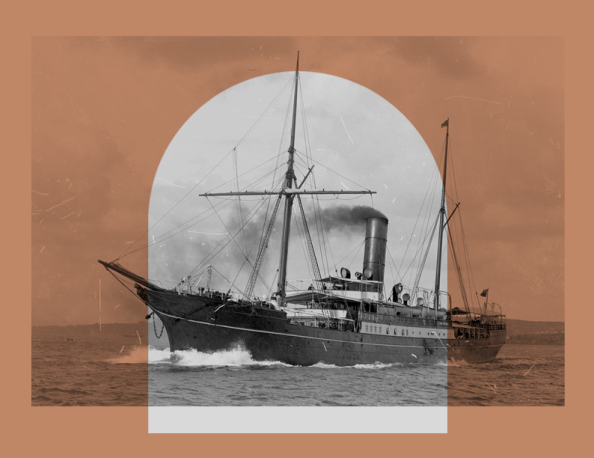Chinese ceramics well and truly hold the title of timeless within the interior and art worlds alike. Besides being prized for their beauty and workmanship, mostly every piece of painted Chinese porcelain was created with a meaning behind the design. So, what does it say? Here’s a quick guide to the symbolism behind some of the most popular designs on your beloved blue & white porcelain.
First thing’s first: there are a few ways meaning is conveyed.
1. A literal depiction, and this is most common in historical or mythological scenes.
More often than not though, the design will be either:
2. Emblematic - a symbol for a quality or concept, often because of its physical characteristics
or
3. Homophonic - the word for the symbol is similar to another with a positive meaning.
Often, a whole design is a combination of these different motifs, but here are some of the common ones you might see.
Fish
One of our favourite designs and seemingly a favourite of Chinese artisans. The word for fish is similar to that of abundance, so it’s long been associated with plenty.
During the Ming Dynasty, four kinds of fish - Chinese perch, carp, mackerel and whitefish - originated as symbols of purity for much the same reason. Today, we still see those four fish on many designs.
Dragon
The dragon is one of the most auspicious of symbols in Chinese culture; in fact, the Chinese people consider themselves descendants of the dragon. It was a symbol of the emperor and adorned imperial court robes and other items reserved only for the court, emperor’s family or only the emperor himself.
The dragon ultimately represents strength, prosperity and good luck, and so is a very popular design throughout Chinese art and ceramics.
Phoenix
The Phoenix is a symbol of grace, virtue and harmony. Known as fenghuang, the phoenix is known to be the female yin counterpart to the male yang represented by the dragon. Because of this, the pairing is commonly associated with a happy marriage or husband and wife.
Peony
The peony is considered the ‘King of Flowers’ and has long been associated with wealth, royalty and beauty. As it flowers in Spring, it’s also a major symbol of the season. Interestingly, if it doesn’t bloom for as prolonged a period as it expected, it’s considered a bad omen.
Chrysanthemum
The chrysanthemum is a symbol of Autumn and the ninth month of the year. This gets a little tricky but stick with us: the word for the chrysanthemum, ju, sounds similar to jiu - the word for the ninth month and also has the same pronunciation as ‘long enduring’.
As a result, the flower is associated with longevity and time, though different colours of chrysanthemum also bear different meanings.
Lotus
The lotus is a symbol of purity, spirituality and overcoming adversity. It draws these meanings from the fact that it rises from often muddy waters, as well as its importance within Buddhism. It is also known by a couple of names, both with their own similar-sounding words like ‘join’, ‘peace’ and ‘succession’. A lotus and a fish are symbols of the feminine and masculine, and so depictions together are often those of love.
Plum Blossom, Pine & Bamboo
These three plants are revered because they flower or continue to flourish in the Winter. They symbolise resilience, hope and strength - particularly in the face of adversity. Sometimes, the trio is depicted in a design known as The Three Friends of Winter, which also symbolises perseverance, steadfastness and resilience.
Bogu
Though it might seem these are akin to still life paintings in Western art, the Bogu design is actually more aligned with the Victorian trend of curio cabinets. These designs feature a collection of prized antique objects, usually framed to symbolise a cabinet or shelf on which they're displayed. Bogu means to converse the with the past; to have a deep knowledge and familiarity with ancient culture and antiquity. Often the items depicted also have their own symbolic meaning, like the word for vase being ping which sounds like the word for peace.
Magpie
The magpie is a good omen, as the word sounds similar to that for happiness. Its call heralds good news and a magpie setting up its home near yours is a sign of good things to come. Another popular design is 'birds of joy', depicting two jolly magpies chattering.
Double Happiness
An absolute classic, this chic design is actually a marriage and union symbol. Shuang xi is a character made of two 'happiness' characters, so items with this design are often gifted to newlyweds. Many also feature a sweet pea backdrop, which has connotations of romance and wealth.
The world of symbolism and cultural history in porcelain designs is vast, but hopefully this is a good jumping off point in better understanding your own porcelain collection, or in helping when you're next thinking of adding to it.
If you like something featured here, just click through on the image; you'll either land on the product page to purchase online, or - if the piece has just arrived - to a message form.
Our latest Chinese shipment includes an incredible collection of porcelain and we welcome enquires whilst we work on getting these pieces uploaded. In the meantime, you can get a taste of the shipment below:

















